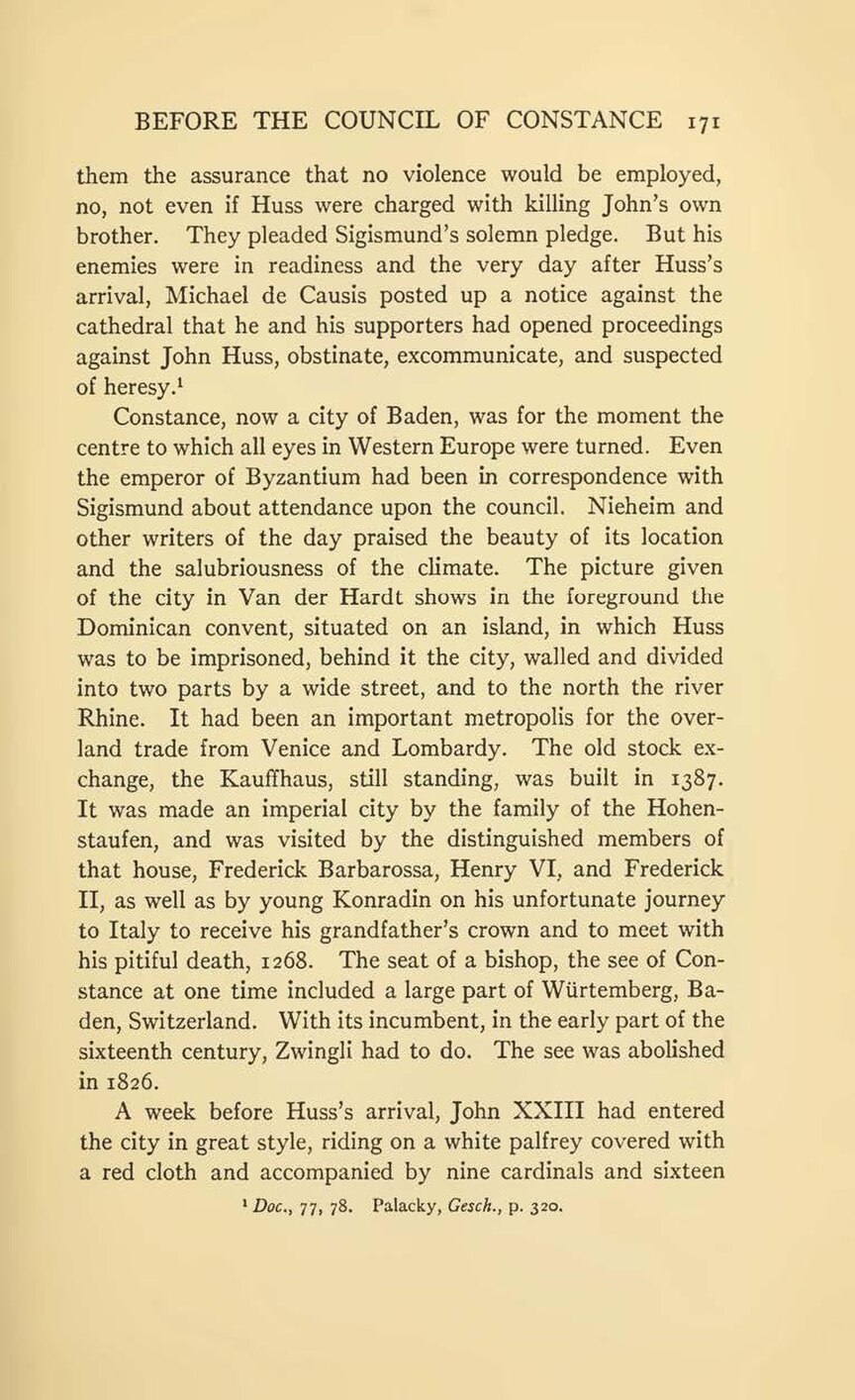them the assurance that no violence would be employed, no, not even if Huss were charged with killing John’s own brother. They pleaded Sigismund’s solemn pledge. But his enemies were in readiness and the very day after Huss’s arrival, Michael de Causis posted up a notice against the cathedral that he and his supporters had opened proceedings against John Huss, obstinate, excommunicate, and suspected of heresy.[1]
Constance, now a city of Baden, was for the moment the centre to which all eyes in Western Europe were turned. Even the emperor of Byzantium had been in correspondence with Sigismund about attendance upon the council. Nieheim and other writers of the day praised the beauty of its location and the salubriousness of the climate. The picture given of the city in Van der Hardt shows in the foreground the Dominican convent, situated on an island, in which Huss was to be imprisoned, behind it the city, walled and divided into two parts by a wide street, and to the north the river Rhine. It had been an important metropolis for the overland trade from Venice and Lombardy. The old stock exchange, the Kauffhaus, still standing, was built in 1387. It was made an imperial city by the family of the Hohenstaufen, and was visited by the distinguished members of that house, Frederick Barbarossa, Henry VI, and Frederick II, as well as by young Konradin on his unfortunate journey to Italy to receive his grandfather’s crown and to meet with his pitiful death, 1268. The seat of a bishop, the see of Constance at one time included a large part of Würtemberg, Baden, Switzerland. With its incumbent, in the early part of the sixteenth century, Zwingli had to do. The see was abolished in 1826. A week before Huss’s arrival, John XXIII had entered the city in great style, riding on a white palfrey covered with a red cloth and accompanied by nine cardinals and sixteen
- ↑ Doc., 77, 78. Palacky, Gesch., p. 320.
